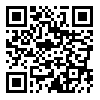
Journal of Emergency Health Care
Formerly known as: International Journal of Medical Investigation

Volume 4, Issue 3 (September 2015)
J Emerg Health Care 2015, 4(3): 313-317 |
Back to browse issues page
Download citation:
BibTeX | RIS | EndNote | Medlars | ProCite | Reference Manager | RefWorks
Send citation to:



BibTeX | RIS | EndNote | Medlars | ProCite | Reference Manager | RefWorks
Send citation to:
Moghaddam M F, Bojd S S, Pishjoo M, Ghafari A. The Prevalence of Enuresis in School Age Children in Zahedan in 2013-2014. J Emerg Health Care 2015; 4 (3) :313-317
URL: http://intjmi.com/article-1-174-en.html
URL: http://intjmi.com/article-1-174-en.html
Medical Student Research Center, Zahedan University of Medical Science, Zahedan, Iran
Abstract: (10586 Views)
Abstract Background: Enuresis is a common urologic problem in pediatric. Enuresis is a symptom with probable multiple etiology such organic developmental disorders or psychological problems. Primary enuresis is often associated with a family history of delays in gaining urine control at the night. The prevalence of enuresis at age 5 are approximately 7% of boys and 3 % of girls. This study aimed to determine the prevalence of enuresis was done in school children in Zahedan. Methods: In this cross-sectional study among 7-12 years old children in the city of Zahedan was in 2013-2014. We have contact with their parents, were asked about their child's enuresis was based on the DSM-IV-TR criteria. Results: 1133 school age children participated in this study that 566 of them (50%) were male. 64 children (5.6%) were diagnosed with enuresis. Prevalence of enuresis decreased with increasing age. Also prevalence of this disorder is higher in boys. Also significant statistically correlation between family histories of this disorder and prevalence of enuresis was seen. Conclusion: Prevalence of this disorder was lower than other studies, which it may be because ethnic and cultural differences among the communities. Given the high prevalence of this disorder, it is felt necessary to raise the awareness of parents.
References
1. 1. Sadock BJ, Sadock VA, Kaplan HI. Kaplan & Sadock's synopsis of psychiatry : behavioral sciences/clinical psychiatry. 11th ed. Philadelphia, Pa: Lippincott Williams & Wilkins. 2009.
2. Behrman ER, Kliegman MR, Jenson BH. Nelson textbook of pediatrics. 19th Edition. Philidelphia:Saunders.2011.
3. Sureshkumar P1, Jones M, Caldwell PH, Craig JC. Risk factors for nocturnal enuresis in school-age children. The journal of urology. 2009;182(6): 2893-2899.
4.Ali Gunes, Gulsen Gunes, Yasemin Acik, Akilli A. The epidemiology and factors associated with nocturnal enuresis in daytime children in Turkey. BMC Public Health. 2009;9:357.
5.Ghahramani M, Basiri Moghadam M, Ghahramani AA. [Nocturnal Enuresis and Impact on Growth]. Iran J Pediatr. 2008; 18(2): 167-170. Persian.
6. Ghotbi N, Kheyrabadi GhR. [Enuresis Prevalence and associated factors in primary school students in Sanandaj]. Sci J Kurdistan Uni Med Sci. 2001; 5(4): 30-34. Persian.
7. Bower WF, Moore KH, Shepherd RB, Adams RD. The epidemiology of childhood enuresis in
Australia. Br J Urol. 1996; 78(4): 602-606.
8.von Gontard A, Mauer-Mucke K, Plück J, Berner W, Lehmkuhl G. Clinical behavioral problems in day- and night-wetting children. Pediatr Nephrol. 1999; 13(8):662-7.
9.Yeung CK, Sreedhar B, Sihoe JD, Sit FK, Lau J. Differences in characteristics of nocturnal enuresis between children and adolescents: a critical appraisal from a large epidemiological study. BJU Int. 2006; 97(5):1069-73.
10. Parishan S, Ashrafizadeh M, Basiri Moghadam M, Ghaharmani M, Chamanzari H. [Evaluation of physical development and its relationship with the first primary enuresis in children enuresis.Undergraduate]. [Dissertation] Gonabad Uni Med Sci; 2006. Persian.
11. Ghai OP, Vinod P, Arvind B. Essential Pediatrics. 7th Edition. CBS Publishers & Distributers Pvt Ltd. 2009.
12. Robson WL. Clinical practice. Evaluation and management of enuresis. N Engl J Med. 2009; 360(14):1429-36.
13. Vande Walle J, Rittig S, Bauer S, Eggert P, Marschall-Kehrel D, Tekgul S. Practical consensus guidelines for the management of enuresis. Eur J Pediatr.2012; 171(6):971-83.
14.Shreeram S, He JP, Kalaydjian A, Brothers S, Merikangas KR. Prevalence of enuresis and its association with attention-deficit/hyperactivity disorder among U.S. children: results from a nationally representative study. J Am Acad Child Adolesc Psychiatry. 2009 Jan;48(1):35-41.
15.Ghoerishi Emami F. [Enuresis in Elementary School in Jahrom City]. Jahrom Medical University Journal 2010. 1(1):5-7. In Persian.
16. Akhavan Karbasi S, Golestan M, Fallah R. [Enuresis in 6 Year Old Children and Its Related Factors.Ofogh-e-Danesh]. GMUHS Journal. 2009; 15(4):63-70. Persian.
17. Nevéus T, von Gontard A, Hoebeke P, Hjälmås K, Bauer S, Bower W, et al. The standardization of terminology of lower urinary tract function in children and adolescents: Report from the Standardisation Committee of the International Children's Continence Society. J Urol. 2006;176:314–24.
18. Aydin S, Sanli A, Celebi O, Tasdemir O, Paksoy M, Eken M, et al. Prevalence of adenoid hypertrophy and nocturnal enuresis in primary school children in Istanbul, Turkey. Int J Pediatr Otorhinolaryngol. 2008;72:665–8.
19. Yeung CK. Nocturnal enuresis in Hong Kong: Different Chinese phenotypes. Scand J Urol Nephrol Suppl. 1997;183:17–21.
20. Readett DR, Bamigbade T, Serjeant GR. Nocturnal enuresis in normal Jamaican children. Implications for therapy. West Indian Med J. 1991;40:181–4.
21.Sureshkumar P, Jones M, Cumming R, Craig J. A population based study of 2,856 school-age children with urinary incontinence. J Urol. 2009 Feb;181(2):808-15.
| Rights and permissions | |
 |
This work is licensed under a Creative Commons Attribution-NonCommercial 4.0 International License. |


